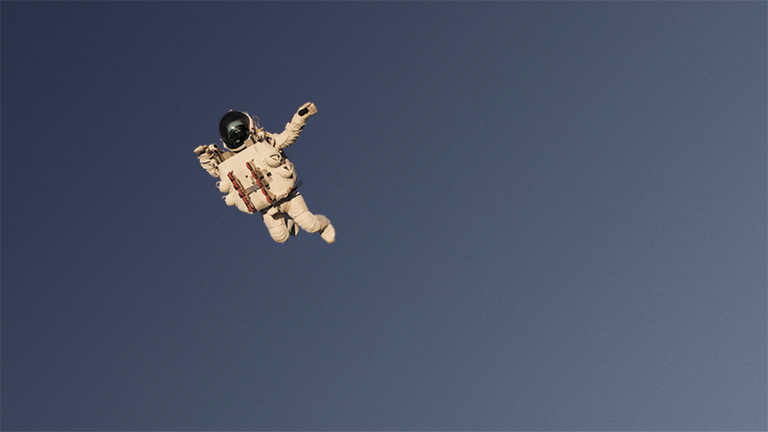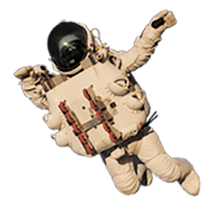
Why I Jumped
On the morning of October 24, 2014, I put on a special space suit, attached myself to a huge helium-filled balloon and began my ascent from Roswell, New Mexico. I kept rising through the blue sky until I reached 135,890 feet, where I nudged the darkened edge of space.
No human, without a rocket, has ever been higher. As I floated up there, suspended from the balloon, I could see the curvature of the Earth. And somewhere below, StratEx project flight director Sebastian Padilla began counting down:
5… 4… 3… 2… 1.
I broke free from the balloon, did a slow back roll and headed down, intent on advancing scientific knowledge and setting the world record for free falling.
During my nearly 26-mile drop from the stratosphere, I hit speeds of 822 mph. I broke the sound barrier, though I didn’t feel any particular turbulence. But back on the ground, my team heard the thundering sonic boom. Four minutes and 27 seconds later, I opened my parachute and floated the last 10,000 feet in about 10 minutes to a safe landing.
To put that world record in local context, imagine sky diving a distance equivalent to walking from the Student Union on campus, all the way down University Boulevard, past Winter Park, past College Park and Ocoee, and into Winter Garden — in just four and a half minutes.
Why would I — a sane man in his 50s with a loving family and a great job as a vice president at Google — do something that must strike many as crazy? I’m no daredevil or thrill-seeker; I’m a computer scientist with three degrees from UCF. But growing up in Central Florida, I developed a love of space exploration. I saw NASA rockets blasting off from Kennedy Space Center, exciting the nation and leaving white trails in the sky.
I think, in some way, I always wanted to see where those trails led. I’d often wondered about the layers of atmosphere where rockets fly. And I’d become particularly fascinated by the last expanse on the edge of space — the stratosphere. It has surprising properties and temperature variations but is little studied.
Our project started with a simple question: Is it possible to build a scuba diving system for stratospheric exploration? Previous attempts to skydive from high altitudes had always included using a capsule, but capsules are heavy, expensive, complex and dangerous.
After a year of painstaking research, I was convinced there was a simpler, safer way. A smarter person would have declared success, written a paper and moved on, but I wanted to build the new system and, more importantly, I wanted to fly it.
So began a three-year engineering odyssey involving some of the brightest and most supportive people I know. First, I needed to validate my idea — I wanted an expert to confirm it was well-grounded and not a flight of fancy. A close friend suggested I talk to Taber MacCallum from Paragon Space Development Corporation. They make suits for hazardous environments and build environmental systems for spacecraft. MacCallum not only believed it was possible, but he assembled the best talent at his company to develop a plan. Paragon had contacts at ILC Dover, the perfect space suit company for the job. We recruited Mark Procos at United Parachute Technologies to build the parachute systems, world-famous balloonist Julian Nott to consult, Jonathon Clark to serve as flight surgeon, and Don Day as the chief meteorologist.
Over the next three years, we ran more than 250 system tests as we slowly learned to do something no one had ever done before. We redesigned the parachute system 11 times. We completed five airplane tests from 18,000 feet, and three balloon tests from 57,000 feet, 105,000 feet and the record flight at 135,890 feet.
In the end, our team not only set a world record, but we invented several new technologies for stratospheric exploration. Rather than turn our effort into a media event, we invited only one reporter to the recordbreaking attempt, and we worked with Jerry Kolber, the executive producer of the TV series “Brain Games,” to produce the documentary 14 Minutes from Earth. It premiered at the Tribeca Film Festival in mid-April in New York.
Our hope is that the film and my jump will excite a new generation of students to challenge themselves, explore their world and redefine what is possible.
Alan Eustace ’79 ’81MS ’84PhD graduated from UCF with a bachelor’s, a master’s and a doctoral degree in computer science. Last year, he retired from Google after serving as senior vice president of engineering and senior vice president of knowledge.


